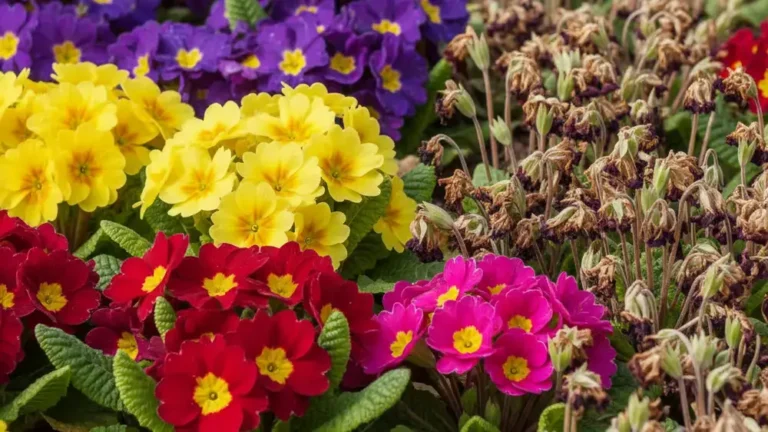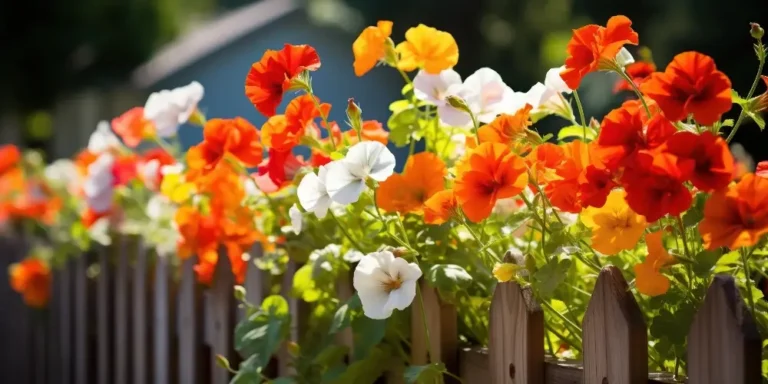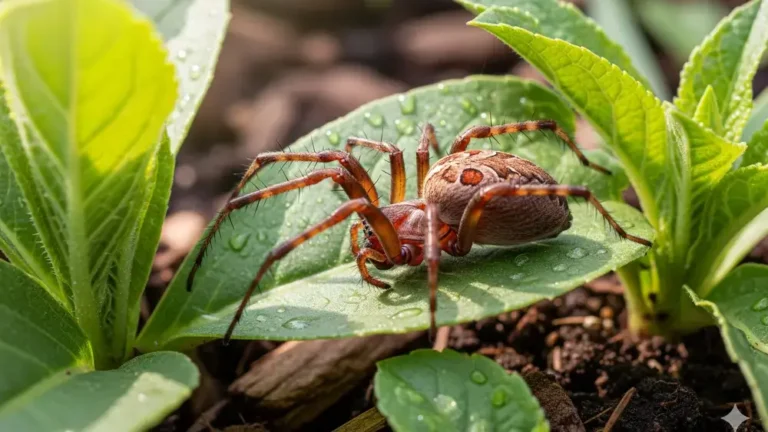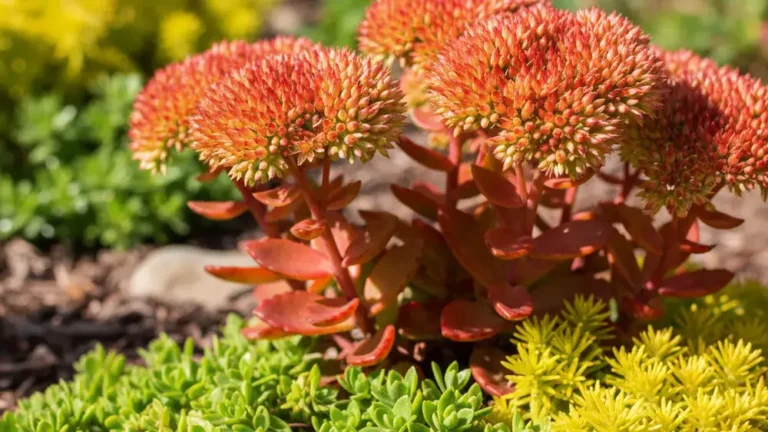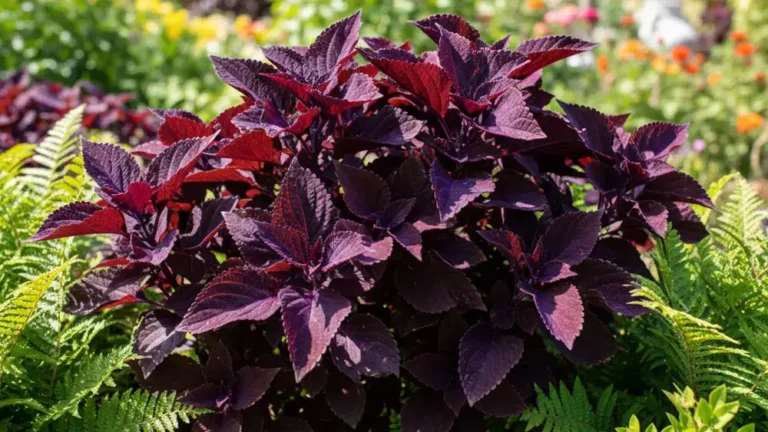How to Choose Knives for Gardening: Expert Tips
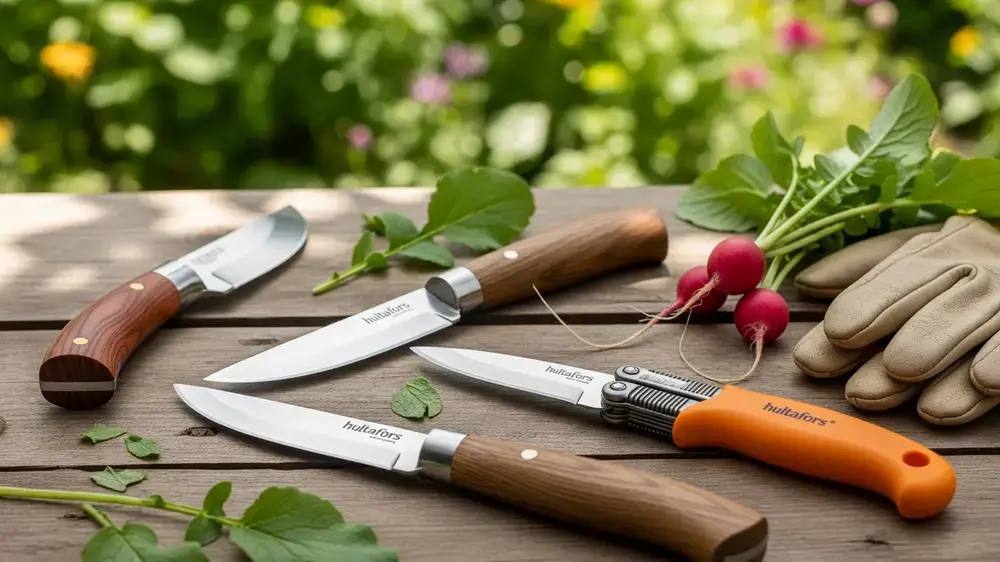
Introduction
A sharp, well-designed knife can make all the difference in your garden. From pruning delicate stems to harvesting fresh vegetables, having the right tool ensures your plants stay healthy and your gardening tasks stay efficient. Many gardeners overlook the importance of knives for gardening, but the truth is, the correct knife can save time, prevent plant damage, and even reduce injuries.
In this guide, we’ll explore how to choose the perfect knives for gardening, covering types of knives, key features to look for, safety and maintenance tips, and expert recommendations. Whether you’re a beginner or an experienced gardener, these tips will help you make smarter, more informed choices for your garden.
Why Choosing the Right Knives for Gardening Matters
The right gardening knife isn’t just about cutting. It affects plant health, harvest quality, and your overall gardening experience. Using the wrong knife can crush stems, tear leaves, or make harvesting frustrating.
Consider these benefits of choosing wisely:
- Protects delicate plants from damage.
- Reduces the time and effort needed for pruning and harvesting.
- Ensures cleaner cuts, which can prevent disease.
- Enhances safety and reduces the risk of accidents.
Types of Knives for Gardening
Understanding the different types of gardening knives helps you pick one suited to your needs.
1. Pruning Knives
- Purpose: Cutting stems, removing dead growth, shaping plants.
- Features: Curved blades, sharp edges, ergonomic handles for comfortable grip.
- Example: A small, curved pruning knife is perfect for roses and delicate flowers.
2. Harvesting Knives
- Purpose: Picking fruits, vegetables, and herbs cleanly.
- Features: Straight or serrated blades, lightweight, portable.
- Example: A serrated knife works well for tomatoes, ensuring a clean cut without crushing the fruit.
3. Multi-Use Garden Knives
- Purpose: Combine pruning, cutting, and harvesting in one tool.
- Features: Durable, rust-resistant blades, balanced weight for precision.
- Example: A multi-purpose knife is ideal for small backyard gardens where versatility matters.
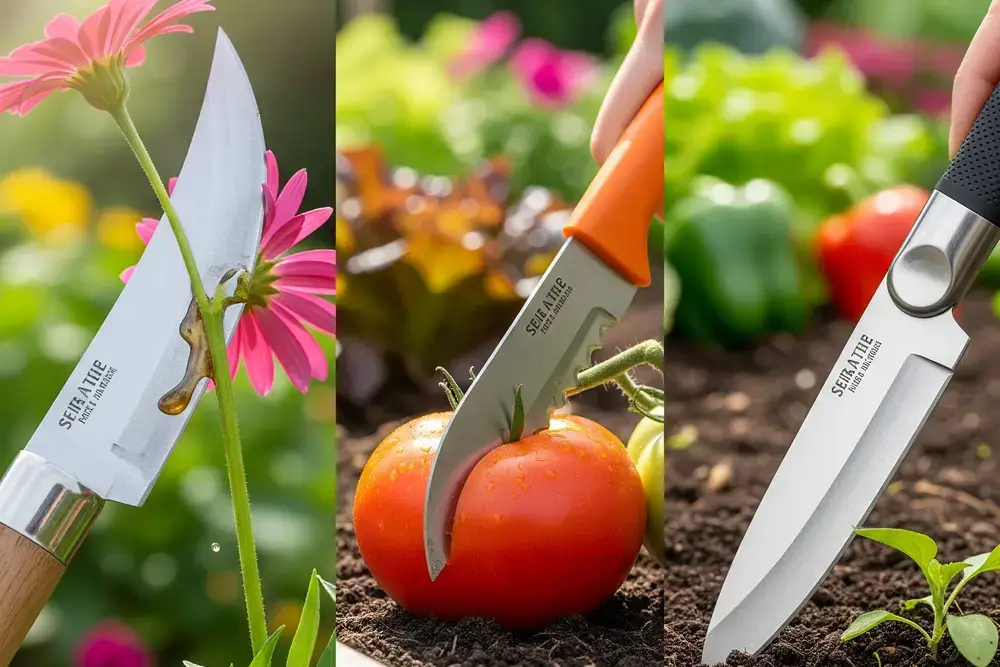
Key Features to Consider When Choosing Knives for Gardening
When selecting your garden knife, pay attention to these essential features:
- Blade Material
- Stainless steel: Resistant to rust, easy to maintain.
- Carbon steel: Holds sharpness longer but requires careful storage to prevent corrosion.
- Coated blades: Add durability and reduce sticking.
- Stainless steel: Resistant to rust, easy to maintain.
- Handle Comfort and Grip
- Ergonomic, anti-slip handles reduce hand fatigue.
- Weather-resistant materials prevent slipping in wet conditions.
- Ergonomic, anti-slip handles reduce hand fatigue.
- Blade Length and Shape
- Short blades (3–5 inches) are ideal for precision cutting.
- Curved blades help with pruning, straight blades are better for harvesting.
- Short blades (3–5 inches) are ideal for precision cutting.
- Safety Features
- Finger guards protect against accidental cuts.
- Folding or locking mechanisms for portable knives.
- Finger guards protect against accidental cuts.
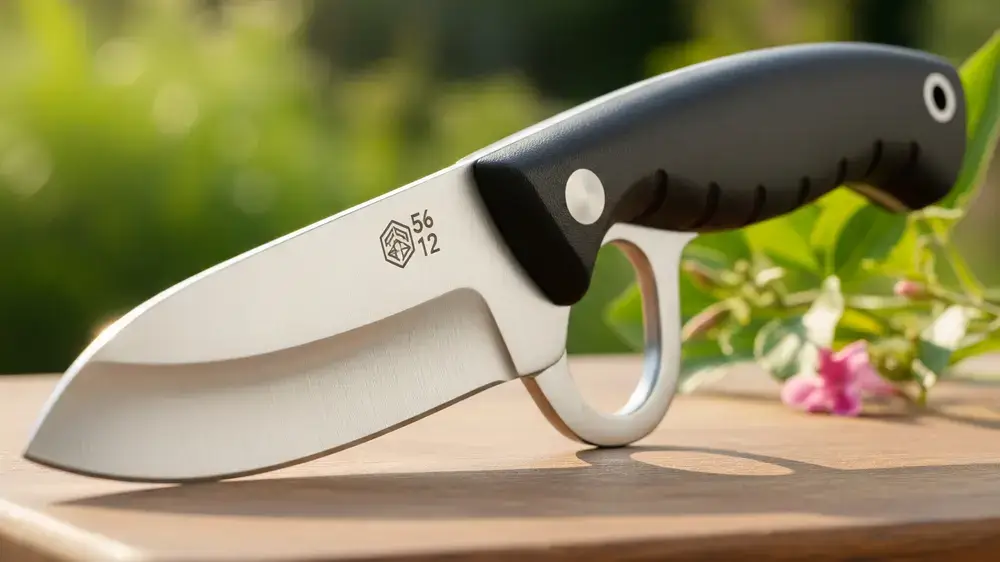
Safety Tips for Using Knives in the Garden
Even the best knife can be dangerous if used incorrectly. Safety should always come first:
- Hold the knife with a firm grip, keeping fingers away from the blade.
- Cut away from your body, never toward it.
- Use a stable surface when slicing vegetables or herbs.
- Store knives safely, out of reach of children.
Maintenance and Longevity of Gardening Knives
Proper care extends the life of your knives for gardening and keeps them effective:
- Sharpening: Use a whetstone or sharpening rod to maintain a keen edge.
- Cleaning: Wash blades after use, dry thoroughly to prevent rust.
- Storage: Keep knives in a sheath or knife block, avoid leaving them outdoors.
- Seasonal Care: Before winter, lightly oil carbon steel blades to prevent corrosion.
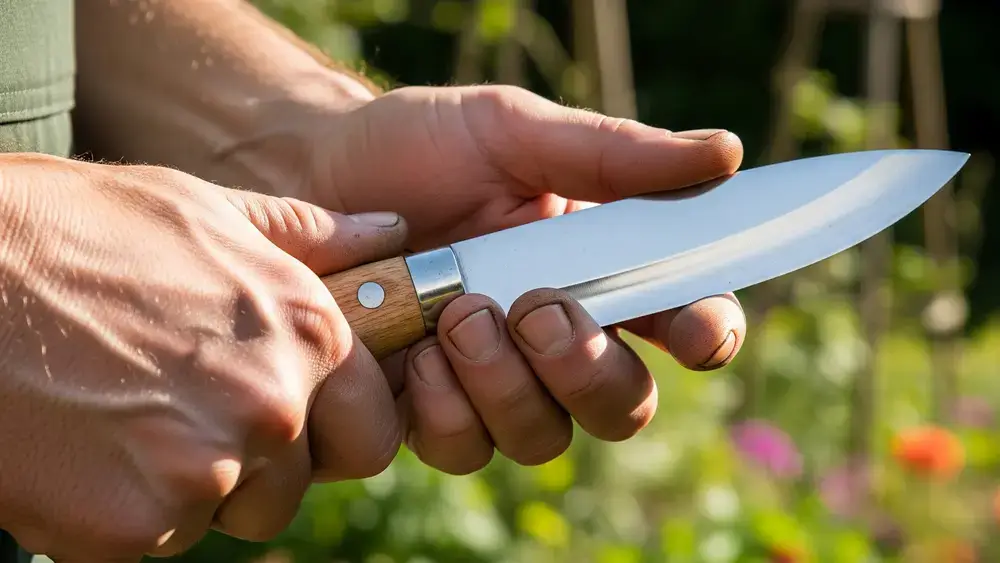
Expert Tips for Selecting the Perfect Knife
Gardeners can benefit from expert advice to match knives to their needs:
- Choose knives according to your garden type: vegetable gardens, flower beds, or orchards may require different styles.
- Balance your budget with quality: A well-made knife may cost more upfront but lasts for years.
- Test before buying: Check weight, balance, and handle comfort. A knife that feels good in your hand will make tasks easier and safer.
Actionable Tips for Gardeners
Here’s a practical checklist for selecting and using gardening knives:
- Identify your gardening tasks: pruning, harvesting, or multi-purpose.
- Check blade material, handle comfort, and safety features.
- Keep knives clean, sharp, and stored properly.
- Educate family members about safe handling.
- Start with 1–2 versatile knives, then expand your collection as needed.
DIY Ideas: Create a small “knife station” in your garden shed with labeled hooks and sheaths. It keeps tools organized and accessible while protecting blades.
Conclusion
Choosing the right knives for gardening is more than a matter of convenience—it’s an investment in your plants, your safety, and the efficiency of your gardening routine. By understanding knife types, key features, safety, and maintenance, you can enjoy healthier plants, cleaner cuts, and a more enjoyable gardening experience.
Start by assessing your garden needs, testing a few knives, and implementing proper care habits. Your garden will thrive, and your tasks will become faster and safer. Share your favorite gardening knives or tips in the comments to help others build the perfect toolkit for their own green spaces.
FAQs
1. What types of knives for gardening should I have?
The essential knives for gardening include pruning knives for trimming stems, harvesting knives for picking fruits and vegetables, and multi-use knives for general cutting tasks. Choosing the right type depends on your garden’s needs. For example, pruning knives work well on delicate flowers, while serrated harvesting knives handle soft fruits without crushing them. Having the appropriate knives for gardening ensures efficiency and prevents plant damage.
2. How do I choose the best blade material for gardening knives?
When selecting knives for gardening, look for durable, rust-resistant materials. Stainless steel blades are low-maintenance and corrosion-resistant, while carbon steel holds a sharper edge longer but requires careful cleaning. Coated blades can prevent sticking and increase durability. Choosing the right material ensures your knives for gardening remain sharp, safe, and effective over time.
3. Are knives for gardening safe to use for beginners?
Yes, knives for gardening are safe when used properly. Beginners should start with small, ergonomic knives with finger guards and cut away from their body. Using a stable surface for harvesting or pruning reduces the risk of accidents. With basic safety practices, gardeners of all levels can confidently use knives for gardening to improve efficiency and plant health.
4. How should I maintain and store knives for gardening?
Proper care extends the life of your knives for gardening. Clean blades after each use, dry thoroughly, and sharpen regularly using a whetstone or sharpening rod. Store knives in sheaths, knife blocks, or designated garden stations to prevent rust and accidental cuts. Regular maintenance ensures your knives remain sharp, safe, and ready for every gardening task.
5. Can one knife handle multiple gardening tasks?
Yes, multi-use knives are designed to handle pruning, cutting, and harvesting. They combine versatility with durability, making them ideal for small gardens or gardeners seeking efficiency. While specialized knives may perform specific tasks better, a high-quality multi-use knife can reduce the number of tools needed. Choosing versatile knives for gardening saves space and simplifies your routine.

